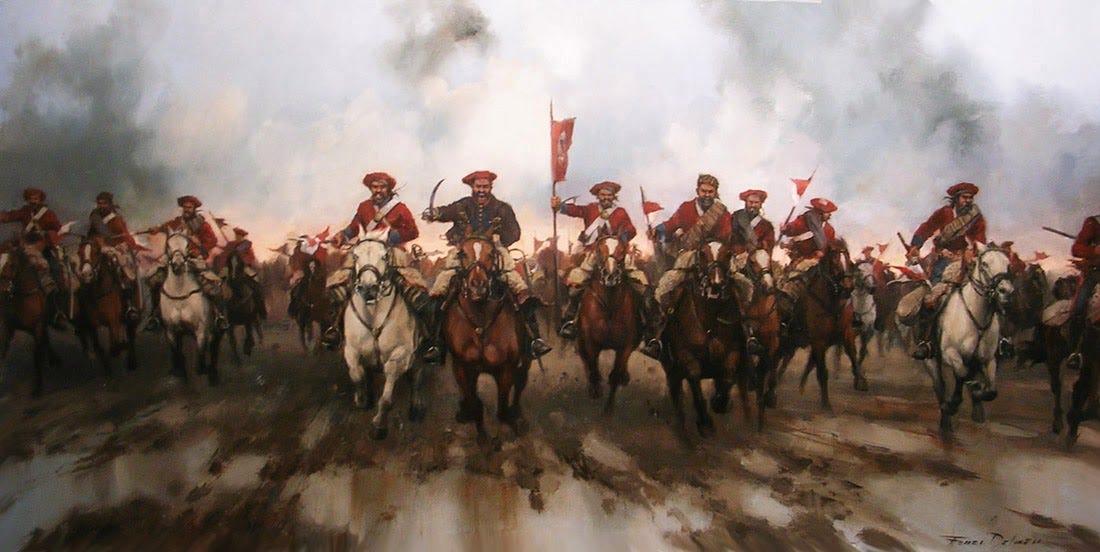This article is in some ways a summary of the booklet ¿Que es el Carlismo?1 in which Francisco Elías de Tejada y Spinola, Rafael Gambra Ciudad and Francisco Puy Muñoz wrote down the basic principles of this school of thought. Although I did not have Spanish at school, my knowledge of French and English was sufficient enough to understand the work, with only a handful of passages requiring me to use a translator. This is a testimony, above all, to the clarity and intelligibility of the text and the eloquency and articulateness of its authors

Carlism is the oldest counter-revolutionary movement still in existence today. It originated in Spain in the first half of the 19th century. Its primary aim was to install Don Carlos María Isidro Benito de Borbón y Borbón-Parma (vivabat 1788-1855), and later his descendants, onto the Spanish throne, not recognising the pragmatic sanction that put Queen Isabella II (regnabat 1833-1868) on the throne.
Although the dynastic succession dispute was the first trigger for the Carlist struggles, the Carlist movement did not stop there. On the contrary, the struggle for the return of the king united the supporters of the traditional social order under the banner of the Cross of Burgundy. In addition to the struggle for dynastic legitimacy, it was also a struggle for the historical continuity of what the Carlists called Las Españas and tradition as a socio-legal paradigm.

The actual causes and controversy of the dynastic dispute are in no way related to a much broader worldwide context, so I will skip this point altogether. Another point championned the Carlists was the preservation of the historical continuity of Las Españas, or in Carlist discourse also called La Hispanidad, by which is meant the totality of all Spanish and Portuguese dominions in the Peninsula, Europe and overseas, respecting their own identities. In my words, I would call it the protection of the particular features of La Hispanidad as a separate periphery of Frankish civilisation from the uniformizing tendencies of the core of Frankish civilization, at that time permeating mainly from France (specifically criticizing afrancesamiento2)
The Carlist understanding of tradition was elaborated more specifically on here: for them it is actually the result of historical development, respecting the diversity of the different regions, which are nevertheless united by the Catholic faith and the common existential experience of the Reconquista.

There are four fundamental points of the Carlist political programme that make up is motto: Díos, Patria, Fueros y Rey.
Díos (God): Carlism invokes God to affirm its theocentric conception of the world and of life, in the strictest fidelity to the secular teaching of the See of St. Peter, whose mission it adopts3 . The Catholic faith is in fact the cement that binds together linguistically, historically or geographically distinct regions. Catholicism thus represents both a true and indisputable truth and the spiritual and metaphysical fabric of the Spains, which ultimately implies the affirmation of the Catholic faith as the state religion and the social doctrine of the Church as a source of inspiration for legislation and social life.
Patria (Homeland): Carlism invokes the homeland to indicate that it upholds a traditional historical federalism based on the Tridentine idea of the particular and the vanishing man4 . The notion of homeland allows for unity in diversity, with Carlists rejecting both centralism and separatism.
Fueros (Liberties or Privileges) Carlism invokes fueros to illustrate that they defend real, specific politico-legal freedoms created by history5 . Fueros, according to Carlists, represent systems for guaranteeing specific freedoms, in a specific place and time, which are the result of historical development, as opposed to the abstract freedoms promised by revolutionary liberalism and rejected outright by totalitarianism.
The cuerpos intermedios, such as the family, municipality, region, university, Church, guilds and nobility, that provided the specific little man with a foothold and protected him from the arbitrary whims of the omnipotent statent have been reduced to an extended arm of the state. Of the once rich social plurality we are left with only a flat, apocalyptic desolation, with only two entities left standing: a lonely abstract man and the all-powerful state. In this tragic desolation, which we are, the point is not to destroy the state, but to restore the social pluralism of society by restoring the freedoms of the individual cuerpos intermedios6.
Rey (King) : Carlism refers to the king to indicate that it postulates a monarchy serving these principles, and thus the key to the unity of the Spanish people, which Carlos VII defined in his testament as a single and indivisible political entity7. The monarchy represents the sovereign institution of Spain, which represents the unity of the Spaniards externally, uniting all the families, provinces and regions in devotion to it, while governing with respect for their liberties. According to the Carlists, the monarchy must be Catholic, historic, social, responsible and hereditary. This means that the monarch should not be merely a ceremonial function of interest to the tabloids. Quite contrary to Britain, where the monarch reigns but does not rule, the Carlist view of the monarchy presupposes an active constitutional responsibility of the monarchy.
The various elements of the Carlist motto are arranged in a particular, specific order - with the greatest weight being given to God, followed by the fatherland, then the fueros (liberties) , the institution of monarchy as such, and finally the king as a particular person. "When the natural priority of these values is changed, although the change may appear to save individual values, in fact they are all destroyed. Even that which should have been overvalued or prioritized"8.
The document that this text references can be found here: https://www.carlismo.es/librosElectronicos/queeselcarlismo.pdf (in Spanish)
Afrancesamiento= frenchification
Que es el carlismo?, par. 45
Que es el carlismo?, par. 45
Que es el carlismo? , par. 45
Que es el carlismo? par. 53
Que es el carlismo? par. 45
Que es el carlismo , par. 49



